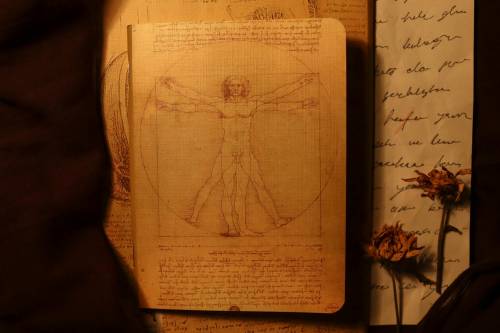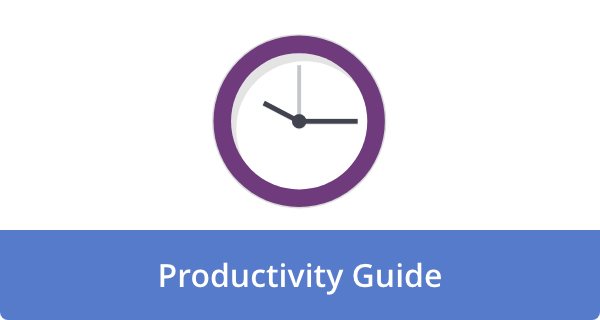

Although time management seems like a modern buzzword, the challenge of organizing time effectively has existed for centuries. History has long been rife with productivity apps, bullet journals, and systems to help us make the most of our days. Throughout history, politicians and artists have employed discipline, habit, and a clear purpose to shape their strategies.
Among history’s most accomplished individuals, these time management lessons can inspire. So let’s explore how their approaches can be adapted to the modern world.
1. Benjamin Franklin: The Architect of Routine
Who he was: A pivotal figure in the founding of the United States, an inventor, a writer, and a diplomat.
According to Benjamin Franklin, a well-defined routine is the key to success. His meticulously documented daily schedule, detailed in his autobiography, meticulously divided his day into specific blocks of time. From focused “work” to serious “reading” to seemingly mundane yet essential “putting things in their places,” each was dedicated to a specific purpose.
Furthermore, Franklin began each day by asking, “What good can I do today?” and concluded each evening by asking, “What good have I done today?”
How to apply it today:
- Design your day’s blueprint. Rather than micromanaging every minute of your life, assign general intentions or types of activities to different parts of your day (morning, afternoon, evening)..
- Intentional beginnings and endings. Take Franklin’s lead by starting your day with a clear guiding question or a specific goal. You should also take a few moments each night to reflect on your progress and stay on track with your larger goals..
- The efficiency of time blocking. By strategically grouping similar tasks together, aka batching, Franklin minimized the cognitive cost and wasted time associated with frequent task changes. With constant digital distractions, a focused approach can significantly boost productivity.
2. Bruce Lee: The Direct Path to Productivity
Who he was: A legendary martial artist, philosopher, and filmmaker who founded Jeet Kune Do.
In addition to martial arts, Bruce Lee’s Jeet Kune Do philosophy encompassed a broader approach to efficiency and effectiveness. As a fundamental principle, Jeet Kune Do emphasizes the elimination of unnecessary movements and thoughts. By eliminating the unnecessary, you can deliver a direct and forceful attack on your target with minimal wasted effort.
How to apply it today:
- The direct route to goals. With Lee’s philosophy of modern productivity, you identify the most direct path to your goals and discard, or delegate, any tasks or activities that do not directly contribute to that objective.
- Eliminate the inessential. Keep an eye on your to-do list and commitments regularly. When possible, delegate tasks that don’t align with your core priorities to others.
- Focus on impactful actions. Put your energy and focus into tasks that will have the biggest impact on your goals, so that you can channel your energy and focus where it matters most.
3. Leonardo da Vinci: The Method in Curiosity
Who he was: He was the quintessential Renaissance polymath — artist, sculptor, architect, musician, scientist, inventor, and more.
His voluminous notebooks, filled with detailed observations, intricate sketches, and groundbreaking ideas across a broad spectrum of disciplines, show Leonardo’s insatiable curiosity. Despite his tendency to switch between several projects, he was fueled by a thirst for knowledge and exploration, not chaos..
While he sometimes left works unfinished due to changing interests, this very variety often fueled his creativity and innovation.
How to apply it today:
- Schedule time for exploration. Rather than viewing curiosity as a negative distraction, schedule time in your schedule for research, side projects, and brainstorming sessions.
- Capture the ephemeral. Using modern tools such as digital note-taking apps such as Notion or Evernote, or even a simple paper journal, you can capture fleeting insights, random ideas, and observations before they vanish.
- Focused attention with permitted exploration. When you have designated exploration time, allow yourself to explore new areas of interest without derailing your primary tasks, while avoiding the pitfalls of chronic multitasking.
4. Thomas Mann: The Sacred Hours of Concentration
Who he was: A renowned German novelist and Nobel Prize laureate.
Thomas Mann recognized the importance of identifying his peak productivity hours. As such, his day was meticulously planned around the period from 9 a.m. to noon, recognizing these three hours as his prime time for deep, focused work. In the morning, he awoke at 8 a.m., bathed, dressed, and shared a cup of coffee with his wife.
As a result of this deliberate mental preparation, free from decision fatigue, he was well-equipped for the intense concentration required in the coming hours. During his three-hour work block, Mann would restrict interruptions, channeling enormous pressure to jot down his thoughts. By noon, his dedicated workday came to an end, allowing him to let his mind and time wander for the remainder of the day, knowing his most important work had been accomplished.
How to apply it today:
- Identify your peak productivity window. Take note of your energy levels and identify the hours when you feel most focused and creative.
- Create a distraction-free sanctuary. To maximize your productivity during your peak period, minimize distractions as much as possible. Ensure you turn off notifications, close all unnecessary browser tabs, and inform others that you require uninterrupted time.
- Protect your prime time. You should treat this dedicated work block as sacred. During this time, schedule your most critical tasks and avoid scheduling meetings or other less important activities.
5. Force Yourself To Stay Focused: Extreme Measures for Productivity
Who they were: Demosthenes, the celebrated Greek orator; Victor Hugo, the celebrated author of “Les Misérables”; and Henrik Ibsen, the influential Norwegian playwright.
To combat distractions and achieve deep focus, these three accomplished figures employed unconventional, even extreme, techniques. To compose powerful orations, Demosthenes shaved off half his hair. Because of the resultant appearance, he avoided leaving his house for months, allowing him to practice and refine his skills alone.
Victor Hugo adopted a similar drastic approach during the creation of “Les Misérables” to avoid distractions that might obstruct his writing. During his writing sessions, he would reportedly remove all his clothing and lock himself in his room. Once he had completed his daily writing goal, he would instruct his servants to hide his clothes, allowing him to return them only afterward.
To fuel his motivation, Henrik Ibsen used a different, but still psychologically powerful, tactic. On his desk, he kept a portrait of his contemporary rival, August Strindberg. By constantly seeing his competitors, he was motivated to focus and excel in his own work.
How to apply it today:
- Identify your primary distractions. Examine the key factors that consistently distract you.
- Implement “forced focus” strategies. Creating environments or enforcing rules that reduce distractions significantly is a far better alternative than shaving our heads or storing our clothes. By using website blockers, working in a quiet space, and turning off all notifications, you can achieve this.
- Leverage motivation through “healthy competition.” Although not everyone has a direct rival, consider using aspirational figures or even your own past performance as motivation to stay focused. Tracking your progress against previous goals and following the work of individuals you admire could be part of this process.
6. Steve Jobs: The Art of Ruthless Elimination
Who he was: Apple Inc.’s visionary co-founder and CEO, a transformative figure in the technology industry.
Known as an unparalleled innovator, Steve Jobs once advised Nike’s new CEO, Mike Parker, “Nike makes some of the best products in the world, products that you lust after. However, you also produce a lot of nonsense. Just get rid of the crappy stuff and focus on the good stuff.”
How to apply it today:
- Regularly audit your activities. Every day or week, evaluate how you spent your time. Identify the activities that consistently waste your time, drain your energy, or fail to contribute meaningfully to your goals.
- Create a nightly task list with prioritization. Each evening, prepare a list of tasks and activities for the next day. To ensure you and your team focus on the most productive endeavors, review this list critically in the morning. Prioritize tasks based on their importance and potential impact.
- The power of strategic pruning. Be willing to eliminate activities that do not support your core objectives ruthlessly. As a result, valuable time and mental energy can be freed up for more important things.
7. Marie Curie: The Unwavering Focus on Mission
Who she was: A physicist and chemist who made groundbreaking discoveries in radioactivity and became the first woman to win a Nobel Prize, and the first to win a Nobel Prize in two different fields.
It was Marie Curie’s unwavering dedication to her research that led to her extraordinary scientific breakthroughs. With little regard for personal comfort, fame, or external distractions, she often worked long hours in the lab without a break. In addition to her exceptional productivity, her unwavering clarity of purpose made her a groundbreaking achiever.
How to apply it today:
- Clarify your guiding “why.” Identify your core goals and their underlying reasons. It’s much easier to say “no” to activities and distractions that don’t serve your mission when it’s clear and deeply personal. To stay focused, write down your goals and revisit them regularly.
- Minimize friction and streamline. Consider eliminating unnecessary complexities from your routines, tools, and processes, just as Curie did. Furthermore, avoid being bogged down by overly complex apps or unproductive meetings.
- Cultivate deep focus. Utilize techniques like the Pomodoro method, which alternates focused work sessions with short breaks, to train your focus. You can also minimize digital distractions by turning off notifications, closing irrelevant browser tabs, and dedicating blocks of uninterrupted time to your most important tasks.
8. Mahatma Gandhi: Aligning Time with Core Values
Who he was: A prominent Indian leader who spearheaded nonviolent resistance to British rule.
The daily schedule of Mahatma Gandhi was deeply influenced by reflection, simplicity, and a profound sense of purpose. In addition to meditation, spinning his own cloth— a symbol of self-sufficiency — and periods of silence for introspection, he made time every day for activities aligned with his core values. As a committed believer in self-improvement, personal growth, and social good, he believed time should be intentionally spent on these pursuits.
How to apply it today:
- Schedule value-aligned activities. Engage in activities that are deeply aligned with your values and beliefs, whether it’s volunteering, practicing spirituality, observing nature, or engaging in mindful movement. Schedule these activities into your weekly schedule consciously.
- Declutter your calendar based on values. Analyze your current commitments and activities critically. When your core priorities or values don’t align with an activity, question its necessity and decline gracefully.
- Incorporate moments of stillness. Incorporate just 5-10 minutes of quiet reflection or meditation into your daily routine. Despite a busy schedule, moments of stillness provide valuable perspectives, reduce stress, and increase self-awareness.
9. Eccentric Exercises for an Energetic Mind (Inspired by Historical Figures)
Who they were: Many historical figures, each of whom had their own unique take on physical activity.
Although exercise benefits mental clarity and overall energy, some remarkably successful individuals have adopted somewhat unconventional physical routines. Among the most famous exercisers is Apple’s CEO, Tim Cook, who rises before dawn to work out.
In addition, Nikola Tesla believed that flexing his toes one hundred times before bed stimulated his brain. During his time at Oxford, the writer Oscar Wilde was known for taking walks with his lobster on a leash.
How to apply it today:
- Find a movement that resonates. It’s not necessary to copy these eccentric routines verbatim. Instead, find physical activities that fit into your lifestyle and that you enjoy.
- Integrate movement throughout your day. Besides dedicated workouts, find other opportunities to incorporate physical activity. Try walking during phone calls, taking the stairs, or doing some stretches between meetings.
- Experiment with the mind-body connection. You can combine physical movement with mental clarity and focus by engaging in practices such as yoga, Tai Chi, or even mindful walking.
10. Charles Darwin: The Power of Pace and Persistence
Who he was: A pioneering naturalist, biologist, and author of “On the Origin of Species.”
Despite his unwavering consistency and persistence, Charles Darwin didn’t work at a rapid pace. Typically, he worked in relatively short, focused sessions, often interspersed with long, contemplative walks in nature. Through meticulous observation and relentless inquiry, he gradually developed world-changing scientific theories over the course of several decades.
How to apply it today:
- Embrace sustainable progress. Rather than working unsustainable bursts that often lead to burnout, focus on steadily, consistently progressing towards your goals. It is often more effective to make small, regular steps than to work long hours at once.
- Integrate movement for reflection. Darwin’s “thinking path” was an integral part of his reflective process. To clear your mind and engage in problem-solving, take walks or engage in other forms of exercise throughout your day.
- Honor your natural energy rhythms. Throughout the day, pay attention to your body’s natural energy cycles. If you’re a morning person, dedicate this time to your most challenging tasks. Plan your day accordingly if you are more productive in the afternoon or evening.
11. Frida Kahlo: Channeling Time into Creative Expression
Who she was: An iconic Mexican painter known for her raw, emotionally powerful self-portraits.
In her life, Frida Kahlo suffered considerable physical pain, dealt with emotional turmoil, and became politically active. Even so, she used her recovery time creatively, painting from her bed during extended periods of illness. It was through her art that she transformed her personal hardships into meaningful expressions of the human experience.
How to apply it today:
- Anchor your time with creativity. Give yourself a space each week to express yourself creatively, whether that’s through writing, painting, music, gardening, or journaling. Consider this time as a vital appointment with yourself.
- Transform limitations into focused creativity. Even in the face of significant physical constraints, Kahlo consistently produced masterpieces, capitalizing on the time and resources at her disposal. Consider any limitations you may have in your own life as catalysts for deeper focus and original solutions.
- Cultivate a sacred creative space. Set aside a space or time in your schedule specifically for creative work. Don’t interrupt or distract this space and time like you would an important meeting.
12. The Myth of Relentless Hustle: Prioritizing Smart Work and Rest
Who they were: Various historical figures who understood the importance of pacing and resting, among them John D. Rockefeller, Michel Foucault, Ludwig van Beethoven, Winston Churchill, Immanuel Kant, and Tom Robbins.
We often glorify constant busyness and relentless hustle in modern culture, almost as a badge of honor. Often, people believe that working longer hours and sacrificing work-life balance equals greater success. However, as many historical figures understood, excessive working hours result in diminished productivity and quality.
As one of history’s wealthiest men, John D. Rockefeller was known for taking daily naps and rest periods. He famously stated, “It is remarkable how much we all could do if we avoid hustling, and go along at an even pace and keep from attempting too much.” In addition to Michel Foucault, Ludwig van Beethoven, and Winston Churchill, many highly productive individuals throughout history have intentionally limited their intense work hours and prioritized rest and rejuvenation.
It has even been shown that work-life balance practices increase productivity within organizations.
How to apply it today:
- Scale back excessive working hours. Try reducing your daily work hours and setting aside time for rest and personal time.
- Focus on high-impact tasks and delegate the rest. Identify the most critical tasks and devote your energy to them. If you can, delegate tasks that aren’t vital to the team or a virtual assistant to others.
- Prioritize work-life balance. Establish programs and habits to improve your work-life balance. If in a leadership role, encourage others to do the same. In turn, this can lead to increased productivity, improved morale, and a better quality of life for everyone.
Final Thoughts
Each of us shares one resource equally: time. However, how we use that resource varies wildly. It was through intentionality, focus, and alignment with their values that these historical figures were able to master time.
Of course, it’s not necessary to shave your head or write naked. Nevertheless, you can borrow the fundamentals: structure, knowing your mission, cutting the noise, and making space.
Remember, you’re not just managing time. You’re shaping your life.
FAQs
Why should I look to historical figures for time management advice when we have so much modern technology?
Although modern technology has provided a wide range of tools for managing time, the foundational principles of effective time management remain unchanged. In the absence of modern technology, historical figures often relied on discipline, intentionality, and self-awareness to maximize their productivity. Taking a closer look at their methods can facilitate a better understanding of these foundational principles, providing ways to motivate yourself and work mindfully that go beyond mere app usage.
Overall, their achievements demonstrate that effective time management is more about mindset and the consistent application of solid strategies than it is about tools.
Many historical figures seemed to have very rigid routines. Is that necessary for effective time management?
Although some historical figures thrived on rigid routines, it isn’t necessarily a one-size-fits-all approach. It’s not about adhering to every minute, but about the underlying principles of intention and structure. Some people thrive with detailed schedules, while others might prefer more flexible frameworks with defined blocks of activities.
You should choose an approach that aligns with your personality, work style, and life demands. In Leonardo da Vinci’s case, curiosity led to remarkable results, while in Charles Darwin’s case, consistency and perseverance led to significant achievements. Regardless of the activity, a deliberate and conscious approach to time management is common.
How can I identify which historical figure’s time management style might work best for me?
Consider your own personality, work style, and current challenges.
- You may be able to relate to Franklin’s approach if you thrive on structure and routine.
- Hugo’s or Demosthenes’ focus on elimination might be helpful if you struggle with distractions.
- Da Vinci’s approach could inspire you if you value exploration and creative thinking.
- Curie’s or Gandhi’s emphasis on mission and values might inspire you if a strong sense of purpose drives you.
Ultimately, experiment with incorporating elements from different figures’ styles to develop a blend that suits your needs.
What is the most important overarching lesson about time management that we can learn from these historical figures?
One of the most important lessons learned from this experience is the importance of intention and purpose.
Despite their diverse fields and methods, these individuals were conscious of the value of their time and directed it toward their goals. Instead of letting the day happen to them, they actively shaped it. Whether through routines, concentrated bursts of work, or adjusting their time to align with their beliefs, they showed that effective time management requires deliberate choices about how to spend time.
When we cultivate the same sense of intentionality and clarity in our own lives, we move beyond just reacting to demands to taking control of our lives.
Image Credit: dilara irem; Pexels











John Rampton
John’s goal in life is to make people’s lives much more productive. Upping productivity allows us to spend more time doing the things we enjoy most. John was recently recognized by Entrepreneur Magazine as being one of the top marketers in the World. John is co-founder and CEO of Calendar.